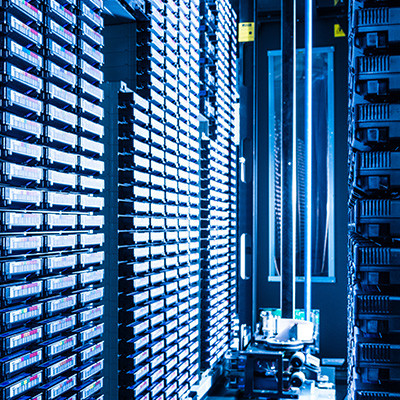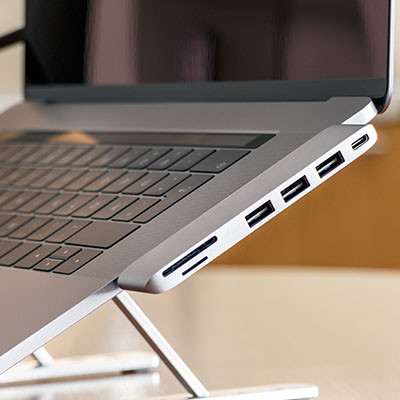Technology is one of the most important elements to consider when growing your business, and while it might seem like it can magically solve all of your operational problems, it takes a lot more than a simple implementation to address your company’s pain points. In fact, failing to integrate technology properly can lead to even more problems.
Phantom Technology Solutions Blog
There’s no getting around the fact that technology is critical for business operations, but with technology come various challenges that need to be addressed. If you’re not careful, issues with your IT can distract you from other technology problems that could develop even further if left unchecked. Let’s look at five of the most common technology issues that modern businesses face.
With many compliance and regulation laws existing in today’s business world, it’s no small wonder that ethical dilemmas surrounding business technology are more common than you might expect. Let’s go over five of the more controversial uses of technology so you can avoid facing them during the course of your operations.
Psychology—the scientific study of the mind and behavior—can provide some significant insights into which actions will ultimately be most beneficial to your company. What message will most effectively reach your clients, how can you inspire more motivation amongst your team, and what can you do to reach your goals more effectively?
Unfortunately, the modern cybercriminals that target businesses just like yours are going to be asking themselves the same questions.
With technology taking center stage for most businesses over the past couple years, you might consider yourself fairly knowledgeable about most business-related technology out there. Still, we want to cover five that are the most trendy and, coincidentally, pretty great for business, too. Let’s dive in.
Data informs decision making, and your business creates countless data throughout the course of its operations. However, metadata—or data about data—offers a unique opportunity to businesses that understand how it works, particularly in the realm of business intelligence (BI) or business analytics (BA). Let’s discuss the importance of metadata and what your company can glean from it.
Tape backup has been used for a long time, and it was once the most prominent solution for data backup out there. Nowadays, it’s not used much at all, mostly in favor of better and more convenient solutions. However, there has been a slight resurgence in tape backup, so we want to look at why some companies might still use it, despite its flaws.
Inefficiency can be a real killer for a business’ ability to take in revenue, but sometimes it seems like this lack of continuity can be unavoidable. It isn’t. Technology can go a long way toward helping you build more efficient processes. In this week’s blog, we discuss a couple of key pieces of technology used by many small businesses to keep their processes streamlined.
Technology enables businesses to streamline operations and make better decisions that can enhance productivity in the short and long term. That said, the sheer number of options available at any given moment for businesses can be intimidating and downright confusing at times. Technology professionals can help you determine the best solutions for your company’s needs.
Do you prefer to get your work done on a desktop? If so, you’re not alone; laptops are great for mobility, but they do have certain limitations placed on them that you might find difficult to work with. Thankfully, you can make most modern laptops work and feel like a desktop with a couple of modifications and components.
Artificial intelligence is all over the headlines, and not always in a good way, but the fact remains that it can save your business plenty of time and resources that could be better invested elsewhere. Let’s go over some ways that businesses just like yours are currently using AI to automate tasks and streamline operations.
The Internet of Things, or IoT for short, has changed how businesses approach many areas of technology management, including how utilities and other systems are managed. Thanks to automated systems that can control utilities such as HVAC systems, heating, lighting, and so on, the IoT gives businesses more opportunities to control costs and improve efforts at efficiency. Let’s look at some of the ways businesses can use IoT devices to produce consistent cost savings.
It certainly is not unusual for businesses to move in the direction of “green” technologies, not just because they are better for the environment, but also because they are simply better for operations. Let’s go over some of the technologies your small business can implement to take advantage of the opportunities afforded by green technology.
Technology often finds its way into pop culture, especially television shows that showcase just how technology has impacted people’s lives. It’s something we can all relate to, as we have lived through a time that has seen exponential technological growth, making for some quite popular television shows that span genres. Let’s take a look at three shows that any technology enthusiast will find interesting.
Your business’ bandwidth could reference a couple of different parts of your IT infrastructure, with the most notable being your network bandwidth and your Internet bandwidth. Today, we want to focus on demystifying your network bandwidth by answering all of the frequently asked questions you might have on the topic.
If your business could go about its daily tasks without having to worry about technology, you would find yourself suddenly much more productive and efficient. Think of all the time and money you could save by not reacting to technology problems. With the right tools and approaches, your company can make great strides toward a more proactive technology management model.
The more complex and robust your IT infrastructure is, the greater the chances that it will undergo a system failure. Basically, according to Murphy’s Law, if something can go wrong, you should expect it to go wrong. To counteract this mentality with real, tangible methods that you can control, you’ll want to implement solutions that prioritize redundancy. This week’s blog is all about how you can build redundancy into your infrastructure through the use of data backup and restoration systems.
Artificial Intelligence (AI) is one of those monikers that we’ve extended to most machine learning technologies nowadays. Over the past few years, however, AI has made huge strides in industry, providing a level of automation that simply wasn’t possible previously. Couple in the massive benefits that organizations can see through AI-driven data insights and it is truly a transformative technology. This week, we’ll take a look at AI and unpack just how fast it is evolving.




















